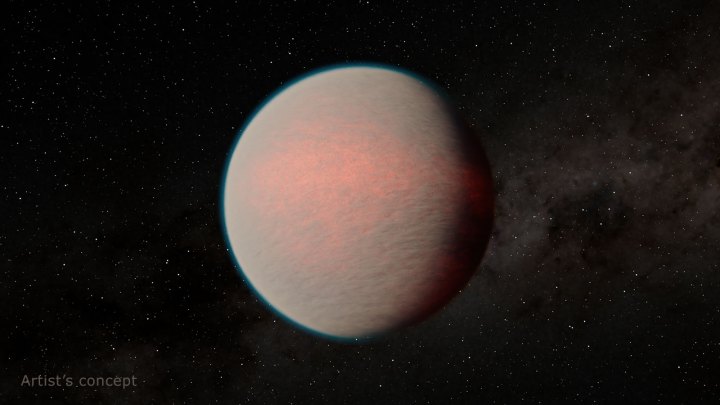Studying other planets is difficult not only because they are so far away, but also because they can have properties that make taking readings much harder. Here in our solar system, we only have scant information about the surface of Venus because its thick atmosphere makes it hard to view. Being 50 light-years away, the planet GJ 1214 b has proved similarly tricky, defying 15 years of attempted observations due to its hazy nature.
But now, the James Webb Space Telescope has been able to peer into the planet’s atmosphere for the first time, revealing the secrets of this mysterious place. It’s known as a mini-Neptune because it has a thick atmosphere and layers of ice like Neptune. Only around three times the diameter of the Earth, the planet likely has lots of water, but it is located in the atmosphere, not on the surface, due to its high surface temperature.

This water vapor may have contributed to the haziness of the atmosphere, which made observations difficult. However, the main culprit compound causing the reflectiveness remains unknown. “The planet is totally blanketed by some sort of haze or cloud layer,” said lead author Eliza Kempton of the University of Maryland in a statement. “The atmosphere just remained totally hidden from us until this observation.”
To observe the planet, researchers used Webb’s Mid-Infrared Instrument (MIRI), which can see temperature variations across the planet, showing the differences between the hot dayside that always faces the star and the cooler nightside that always faces out into space. As well as learning about the atmosphere’s composition, scientists were also able to determine that the planet’s average temperature is a scorching 230 degrees Celsius.
This shows how new tools are able to crack some of the tough nuts in exoplanet research, according to experts who described the planet as a “white whale of exoplanet atmosphere characterization.”
“For the last almost decade, the only thing we really knew about this planet was that the atmosphere was cloudy or hazy,” said Rob Zellem, exoplanet researcher at NASA’s Jet Propulsion Laboratory in Southern California. “This paper has really cool implications for additional detailed climate interpretations – to look at the detailed physics happening inside this planet’s atmosphere.”
The research is published in the journal Nature.
Editors' Recommendations
- James Webb gets a stunning view of a far-off planetary system
- Previously unknown exoplanet discovered using machine learning
- James Webb captures stunning image of supernova remnant Cassiopeia A
- James Webb spots exoplanet with gritty clouds of sand floating in its atmosphere
- Tidally locked exoplanets could be habitable in the ‘terminator zone’




